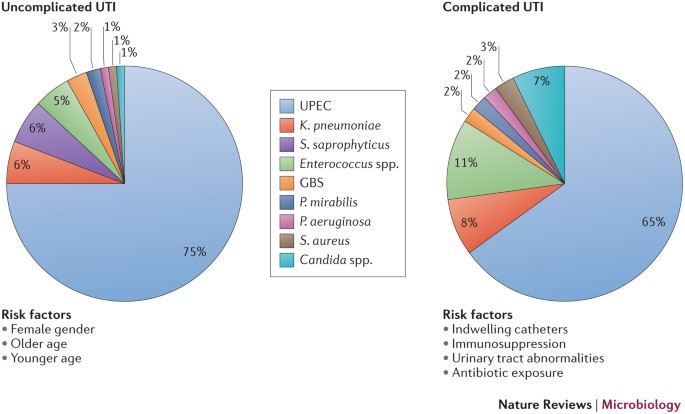Urinary tract infections (UTIs) are a significant health concern for elderly women, often presenting with unique challenges and symptoms compared to younger individuals. This comprehensive guide delves into the common symptoms of UTIs in elderly females, explores why these infections are more prevalent in this demographic, and highlights subtle and atypical signs that can easily be overlooked. Additionally, the guide addresses the complications and risks associated with UTIs, effective diagnosis and testing methods, and treatment options tailored for elderly women. Preventative measures and the crucial role of caregivers in managing and preventing UTIs are also discussed, providing a thorough understanding of this critical health issue.
Explore this topic thoroughly with ujocis.net
1. Common Symptoms of UTIs in Elderly Women
Urinary tract infections (UTIs) in elderly women can manifest with a range of symptoms, some of which are common to all age groups, while others are more specific to the elderly population. The typical symptoms include a frequent and urgent need to urinate, a burning sensation during urination, and cloudy or strong-smelling urine. Many elderly women also experience pelvic pain and pressure, especially in the lower abdomen.
However, UTIs in older adults often present with less typical symptoms that can be easily mistaken for other health issues. These may include increased confusion or delirium, sudden changes in behavior or mental status, fatigue, and weakness. Some elderly women might also experience incontinence or worsening of existing incontinence. Fever is a less common symptom in this age group but can occur, particularly if the infection has spread to the kidneys.
Recognizing these symptoms promptly is crucial, as UTIs can lead to severe complications if left untreated. Family members and caregivers should be particularly vigilant for any sudden changes in the elderly woman’s usual behavior or physical condition, as these might be the only indicators of a UTI. Early detection and treatment are essential to prevent further health deterioration and improve the quality of life for elderly women suffering from UTIs.
2. Why UTIs Are More Prevalent in Elderly Females
Urinary tract infections (UTIs) are more prevalent in elderly females due to a combination of physiological changes, comorbidities, and lifestyle factors that increase their susceptibility. One significant factor is the natural decline in estrogen levels post-menopause, which leads to changes in the urinary tract, making it more susceptible to infections. The thinning of the vaginal and urethral tissues, along with decreased acidity in the vaginal environment, reduces the natural defense mechanisms against bacteria.
Additionally, elderly women often have weaker immune systems, making it harder for their bodies to fight off infections. Chronic health conditions, such as diabetes, also play a role in increasing the risk of UTIs, as they can lead to higher levels of sugar in the urine, creating an environment conducive to bacterial growth.
Elderly females are also more likely to experience urinary retention due to conditions like bladder prolapse or neurogenic bladder, which can prevent complete emptying of the bladder and allow bacteria to proliferate. Furthermore, the increased use of catheters and other medical interventions in elderly women can introduce bacteria into the urinary tract. Lastly, mobility issues and incontinence can contribute to poor hygiene practices, further elevating the risk of UTIs. These factors combined make UTIs a common concern for elderly women.

3. Subtle and Atypical UTI Symptoms in the Elderly
In elderly women, UTIs often present with subtle and atypical symptoms that can be easily overlooked or misattributed to other health conditions. Unlike the classic symptoms such as burning during urination and frequent urges, older adults may exhibit less obvious signs. One of the most common atypical symptoms is a sudden onset of confusion or delirium. This cognitive change can be mistaken for dementia or other neurological issues, delaying proper diagnosis and treatment.
Other subtle symptoms include increased lethargy and generalized weakness, which might be attributed to aging rather than an underlying infection. Some elderly women might also experience a loss of appetite or gastrointestinal discomfort, which are not typically associated with UTIs in younger individuals. Additionally, falls and decreased mobility can sometimes be the only indicators of a UTI in the elderly, as the infection can affect balance and coordination.
Healthcare providers and caregivers need to be vigilant for these atypical symptoms, as early detection and treatment are crucial in preventing complications. Recognizing these less obvious signs can lead to timely medical intervention, ultimately improving outcomes and quality of life for elderly women suffering from UTIs.

4. Complications and Risks Associated with UTIs in Older Women
UTIs in older women can lead to significant complications and increased health risks if not promptly and effectively treated. One of the most serious complications is the progression of the infection to the kidneys, resulting in pyelonephritis. This condition can cause severe pain, fever, and potentially lead to kidney damage or sepsis, a life-threatening systemic infection.
Additionally, recurrent UTIs can cause chronic discomfort and may require long-term antibiotic use, which carries its own risks, such as antibiotic resistance and side effects. Elderly women with UTIs are also at higher risk for developing urosepsis, where the infection spreads into the bloodstream, leading to severe illness and requiring intensive medical care.
Furthermore, UTIs can exacerbate existing health conditions, such as diabetes and heart disease, complicating their management. The cognitive effects of UTIs, like confusion and delirium, can increase the risk of falls and injuries, significantly impacting the quality of life and independence of elderly women. Recognizing and addressing UTIs promptly is essential to mitigate these risks and prevent serious health complications.
5. Diagnosis and Testing for UTIs in Elderly Females
Diagnosing UTIs in elderly females requires a comprehensive approach due to the often atypical presentation of symptoms. Healthcare providers typically begin with a detailed medical history and a thorough physical examination to identify any subtle signs that might indicate a UTI. Because elderly women might not always exhibit classic symptoms, it is crucial to consider changes in mental status, appetite, and general well-being as potential indicators of an infection.
The primary diagnostic test for a UTI is a urinalysis, which examines a urine sample for signs of infection such as the presence of white blood cells, red blood cells, and bacteria. A urine culture is also commonly performed to identify the specific type of bacteria causing the infection and to determine the most effective antibiotic treatment. In cases where the infection is suspected to have reached the kidneys or caused more severe complications, additional tests like blood cultures, ultrasound, or CT scans may be required to assess the extent of the infection.
For elderly women with recurrent UTIs or complicated medical histories, healthcare providers might recommend further evaluation by a specialist. This could involve imaging studies or cystoscopy to examine the bladder and urinary tract for structural abnormalities or other underlying issues. Prompt and accurate diagnosis is essential to ensure effective treatment and prevent serious complications.

6. Effective Treatment Options for Elderly Women with UTIs

Treating UTIs in elderly women effectively involves a combination of antibiotic therapy, symptom management, and addressing underlying health issues that contribute to the infection. The choice of antibiotics is typically guided by the results of the urine culture to ensure the medication targets the specific bacteria causing the infection. Commonly prescribed antibiotics include trimethoprim-sulfamethoxazole, nitrofurantoin, and ciprofloxacin. The duration of treatment may vary depending on the severity of the infection and the patient’s overall health.
In addition to antibiotics, managing the symptoms of a UTI is crucial for patient comfort and recovery. Pain relief can be achieved with over-the-counter medications like acetaminophen or ibuprofen, while increased fluid intake helps flush out the urinary system and reduce bacterial load. In some cases, doctors may recommend urinary analgesics to alleviate discomfort during urination.
For elderly women with recurrent UTIs, preventative measures are essential. This may include low-dose antibiotics taken over a longer period, probiotics to maintain healthy urinary tract flora, and lifestyle modifications such as proper hydration, regular bathroom habits, and good personal hygiene practices. Addressing and managing chronic health conditions like diabetes is also vital in reducing the risk of recurrent infections. Comprehensive and personalized treatment plans are key to effectively managing UTIs in elderly women and preventing future occurrences.
7. Preventative Measures to Reduce UTI Occurrence in Elderly Females
Preventing UTIs in elderly women involves a combination of lifestyle adjustments, medical interventions, and awareness of personal hygiene practices. Staying well-hydrated is one of the most effective preventive measures, as increased fluid intake helps flush out bacteria from the urinary tract. Elderly women should aim to drink plenty of water throughout the day to maintain regular and complete bladder emptying.
Proper hygiene practices are also crucial in preventing UTIs. This includes wiping from front to back after using the bathroom to prevent bacteria from the anal area from entering the urinary tract. Regular, gentle cleansing of the genital area can also reduce the risk of bacterial infection. For those who are incontinent, frequent changing of incontinence products and maintaining clean, dry skin is important.
Encouraging regular bathroom habits can help prevent urinary retention, a common issue in the elderly that can contribute to UTIs. Women should be reminded to empty their bladder completely and avoid holding urine for extended periods.
In some cases, healthcare providers may recommend prophylactic antibiotics for women with frequent UTIs. Cranberry supplements or probiotics may also be suggested as they have been shown to promote urinary tract health. Finally, managing chronic health conditions such as diabetes is essential, as well-controlled blood sugar levels can reduce the risk of infections. These preventative measures collectively help reduce the occurrence of UTIs in elderly females.
8. The Role of Caregivers in Managing and Preventing UTIs in Elderly Women
Caregivers play a vital role in managing and preventing UTIs in elderly women by closely monitoring health changes and implementing preventive strategies. They are often the first to notice subtle symptoms or changes in behavior that could indicate a UTI, such as increased confusion or sudden changes in urinary habits. Prompt reporting of these signs to healthcare providers is crucial for early diagnosis and treatment.
Caregivers can help ensure that elderly women stay well-hydrated by encouraging regular water intake and assisting with meal planning to include fluids. They should also maintain proper personal hygiene by assisting with or supervising regular bathing and ensuring that the genital area is clean and dry. For those with incontinence, caregivers need to manage and frequently change incontinence products to prevent skin irritation and bacterial growth.
Regular bathroom visits should be encouraged to prevent urinary retention, and caregivers should assist with ensuring that elderly women can access facilities conveniently. Additionally, they should be vigilant about managing any underlying health conditions, such as diabetes, which can increase the risk of UTIs. By implementing these practices and working closely with healthcare professionals, caregivers can significantly reduce the occurrence and impact of UTIs in elderly women.
Understanding and managing UTIs in elderly women is crucial for maintaining their health and quality of life. With their often atypical symptoms and increased risk factors, early recognition and prompt treatment are essential to prevent serious complications. By implementing effective preventive measures and involving caregivers in daily care routines, the occurrence of UTIs can be significantly reduced. Careful attention to hydration, hygiene, and overall health management, along with regular medical check-ups, plays a vital role in safeguarding elderly women from these infections. Through awareness and proactive care, we can better support the well-being of our elderly loved ones.
ujocis.net
ujocis.net

